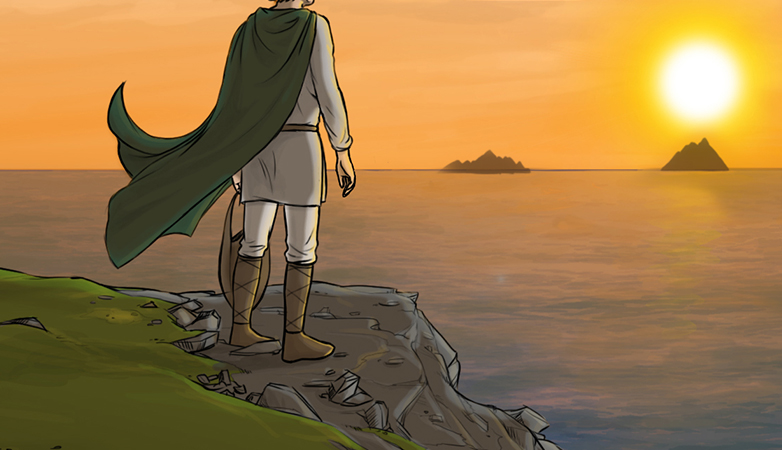During the past few hundred years, countless legends and myths of the past have been shoved off to the side, “disproven” by modern historians and scientists. This has especially been the case in regards to the lives of saints and other legendary events in Catholic history.
[featured-image single_newwindow=”false”]
Simply put, Christian fairy tales and legends have been deemed “outdated,” and viewed by many as an “inaccurate” view of history. This is a great travesty, as it has removed an important element of life that we no longer live with: a sense that there is more to this world than meets the eye.
Myths of medieval Christianity were written and embellished over the year not so that they could create a false picture of history, but a true one. St. George and the Dragon is probably one of the most famous examples of this type of story.
Historians generally discredit the story and just label it as a “myth.” Yet, it doesn’t really matter whether St. George actually killed a dragon. The story itself, based on a historical person who led a saintly life, was a powerful soldier who defeated many supernatural attacks that were waged against him by evil forces. The story is a credit to his character and better illustrates who he was more than a bland list of facts could ever do.
Above all, the story of St. George and the Dragon inspires us to wage our own spiritual battles and gives us hope that we too can defeat the enemy that pursues us.
Indeed, it is these types of stories that captivate us and encourage us to look around at the world in a different way. The modern-day myth of Star Wars is a prime example.
George Lucas explained once in an interview, “I put the Force into the movies in order to try to awaken a certain kind of spirituality in young people.” He wanted children to discover the existence of God in their life and to see that there is more to this world. While Lucas wasn’t keen on organized religion, his intention is similar to the story-tellers of old. Using legend and myth to open up the spiritual eyes of people.
After watching the latest installments in the Star Wars saga, The Force Awakens and The Last Jedi, I recognized an opportunity to breathe new life into a legendary story connected to one of the islands used as a shooting location in these movies.
The mythical island of Ahch-To is in real life the Irish island of Skellig Michael, off the southern coast of Ireland. It was chosen for its spiritual “authenticity,” and still contains a rich presence of God that was once a home to devout Irish monks for 600 years. I personally was captivated by seeing the island on screen and wanted to share that experience with others in a new way.
Instead of writing an adventurous historical-fictional novel like Taylor Marshall’s Sword and the Serpent (based on St. George and the Dragon) or Raymond Arroyo’s fantasy-adventure book series Will Wilder, I decided to turn to a visual medium, a comic book.
The comic book offers a unique opportunity to tell an engaging story by using stunning artwork. Since Skellig Michael is such a remarkable place, I felt it was only fitting to create a comic book series centered on it.
Additionally, I didn’t just want to tell the story of the monks there, but to present a fascinating legend that involves these monks. My new comic book series (I have 7 issues planned), Finnian and the Seven Mountains, explores a rather unknown legend that has gained popularity in recent years. It is called the “Sword of St. Michael,” and revolves around seven monasteries all dedicated to the Archangel.
In the comic book series I also use other elements of Irish legends and combine them all in an exciting journey that features a struggling main character who seeks to avenge the death of his parents. It is aimed at Catholic and non-Catholic readers alike and doesn’t feature any “preaching.” I firmly believe that often the most effective way to convey truth, beauty and goodness is not to “preach,” but simply to “show.”
In the end, these fantastic myths and legends of Christianity, while they may not be historically “true,” possess an even greater truth that enables them to transcend time and inspire people of every age.
As Han Solo reflected while talking to Rey in The Force Awakens.
Rey: The Jedi were real?
Han Solo: I used to wonder about that myself. Thought it was a bunch of mumbo-jumbo. A magical power holding together good and evil, the dark side and the light. Crazy thing is… it’s true. The Force. The Jedi… All of it… It’s all true.
These stories may seem hard to believe, but they are true, more true than we could possibly imagine.
–> Click here to access a FREE preview of Finnian and the Seven Mountains

